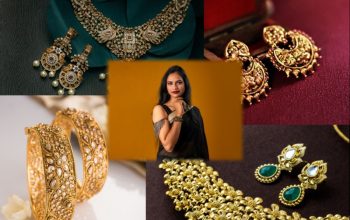Indeed, saree is six yards of pure grace. Threads woven in intricate details, a tapestry revealing culture, tradition and hours of backbreaking work saree is considered a symbol of grace, elegance and femininity to all the Indian women. Sarees are not just clothes draped elegantly; these fabrics narrates stories of skilled craftsmanship, vibrant colors, and intricate design and patterns passed down from many generations. Traditional sarees from Gujarat hold a special place in Indian textile heritage. Garments hailed from Gujarat portray the region’s cultural diversity, weaving techniques, and artistic expressions. Here’s a detailed exploration of the traditional sarees from Gujarat, spanning their history, styles, and significance.
Introduction to Gujarati Sarees
Gujarat, a state in western India, is renowned for its exquisite handloom sarees that have been passed down through generations. As a diverse country India has thousands of authentic and exquisite saree designs and Gujarat is one of those beautiful and charming state with some most treasured hand-woven saree, a must for your wardrobe. Gujarat offers you a wealthy of options to choose Patola Saree, Bandhni, Panetar, Gharchola are just few of those awe-inspiring sarees.
The Patola Saree
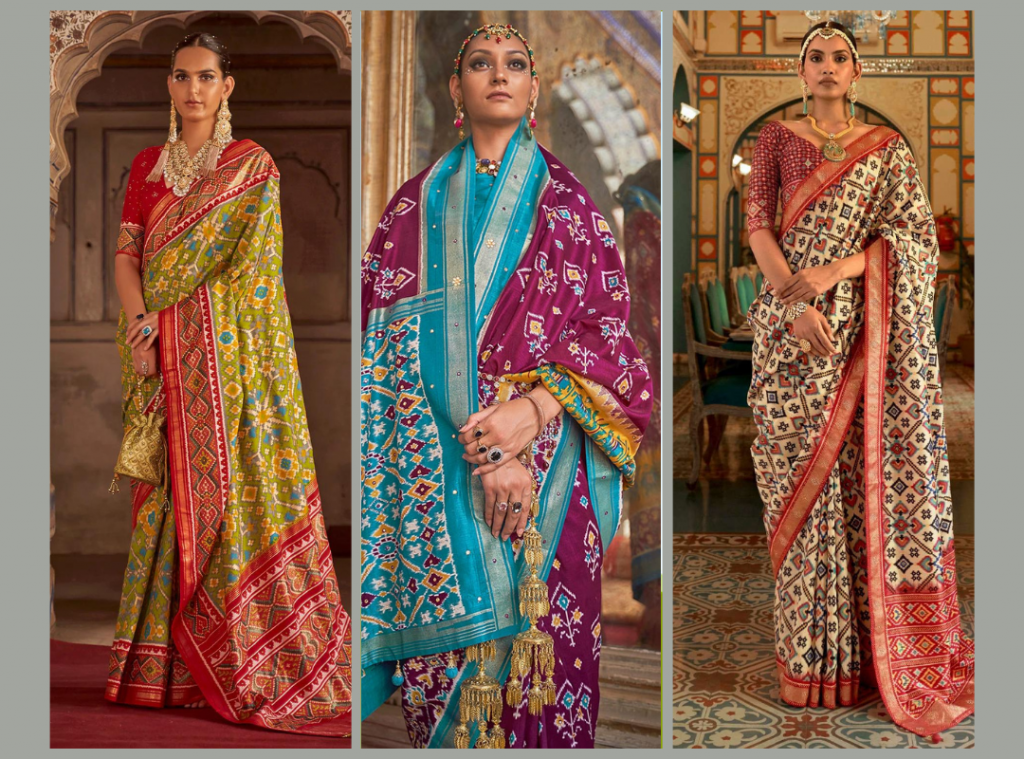
The Patola saree is a masterpiece of double-ikat weaving, from Patan, Gujarat. These sarees are known for their intricate geometric patterns and vibrant colors, often featuring motifs inspired by nature, mythology, and Vedic symbolism. The process of weaving patola cloth is a very delicate and a long and strenuous process and requires a lot of effort and hard work. Each saree may take anywhere from one year or even more to complete, with the design being woven into the warp and weft of the threads before they are woven on the loom. This method is done for each color to be added to the saree, this technique of dyeing before weaving is known as double ikat. It is a true testament of the effort and skill that the weavers have put into the creation of the saree.
History of Patola Saree
Patola comes from the Sanskrit word ‘pattakulla’, meaning silk fabric. It all started when 700 patola weavers from Salvi caste of Maharashtra migrated to Patan, Gujarat came to the palace under the request of King Kumarpala himself. The Solanki ruler was extremely fascinated with the intricating design of Patola and used to wear it on special occasions. After the decline of the empire these Salvi’s noticed the high demand of Patola saree and its symbolism with high status in the society. This craft of Patan is more than 850 years old and still thriving.
Designs and Motifs
Designs and motifs on Patola saree are inspiration of the rich heritage of Gujarat. Predominantly the designs consist of human figures, elephants, flowers, kalash, paan, shikhar, parrots, and architectural designs inspired by the architecture of Gujarat. Today, modern designer tests their limit and explore with different combination of designs and motifs. Most popular patterns are Narikunjar, Ratanchawk, Navaratna, Voragaji, Chhabdi Bhat, Chokhta Bhat, Chanda Bhat, Pan Bhat, Phul Bhat, Laheriya Bhat, Tarliya Bhat, Zumar Bhat, Sankal Bhat, Diamond Bhat, Star Bhat, Butta Bhat, Sarvariya Bhat etc.
Rajkot Patola Saree
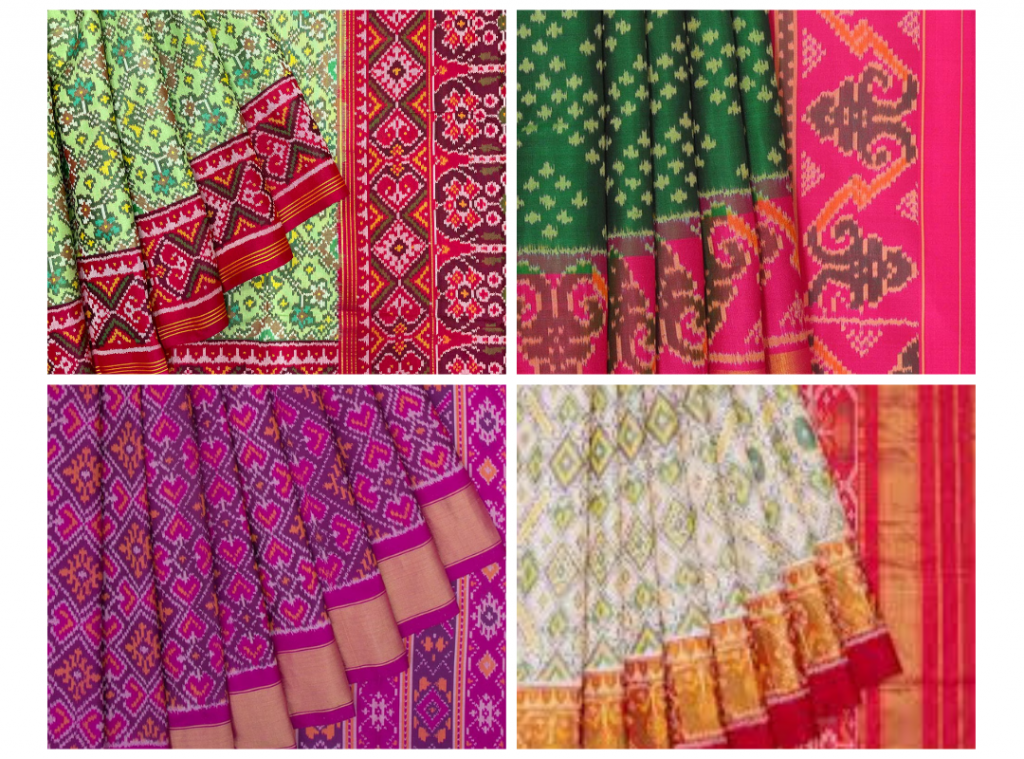
There are two types of Patola saree- While Patan Patola is crafted with horizontal resist-dyeing method known as double ikat, Rajkot Patola is woven with vertical resist-dyeing known as single ikat. These sarees are not considered as prized but still they are made of the same mulberry silk and are widely known for their designs and convenience.
Tangaliya Saree
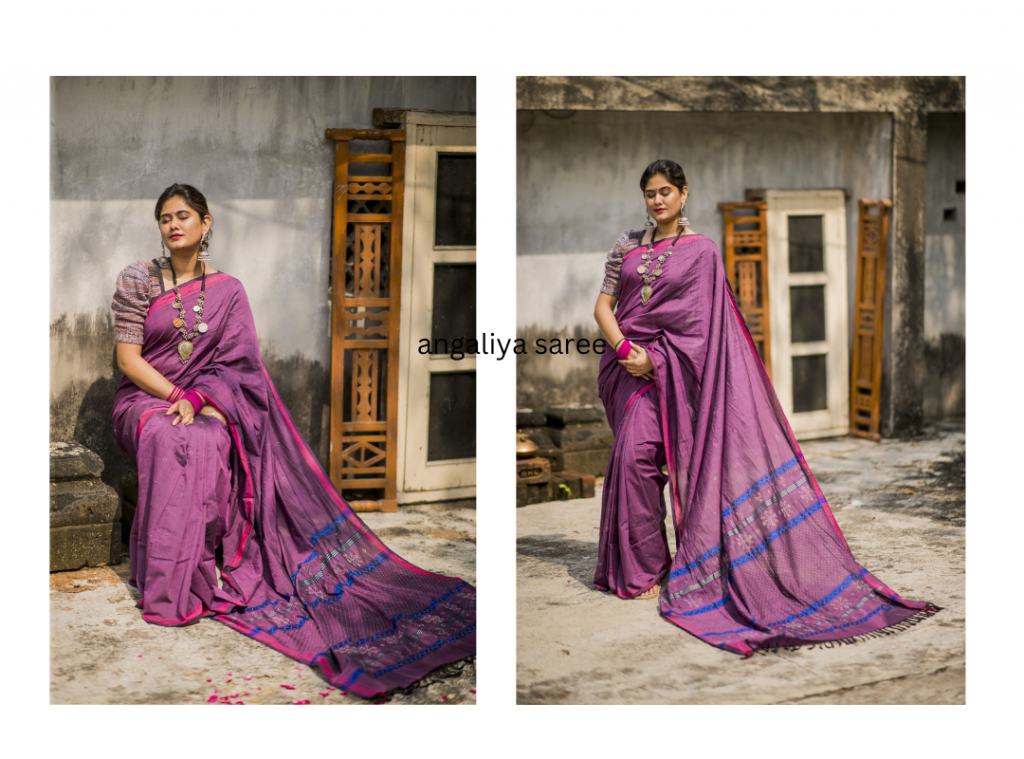 The Tangaliya saree is a traditional handloom saree from Gujarat, known for its unique checkered patterns and vibrant colors. The origins of the Tangaliya saree can be traced back to the 17th century, when it was popular among the rural communities of Gujarat. The name “Tangaliya” comes from the Gujarati word “Tanganaa,” which means to stretch or weave tightly. The Tangaliya saree features a distinctive checkered pattern created by interweaving different colored threads. The patterns can range from simple checks to more intricate designs, often incorporating motifs like diamonds, stripes, and geometric shapes.
The Tangaliya saree is a traditional handloom saree from Gujarat, known for its unique checkered patterns and vibrant colors. The origins of the Tangaliya saree can be traced back to the 17th century, when it was popular among the rural communities of Gujarat. The name “Tangaliya” comes from the Gujarati word “Tanganaa,” which means to stretch or weave tightly. The Tangaliya saree features a distinctive checkered pattern created by interweaving different colored threads. The patterns can range from simple checks to more intricate designs, often incorporating motifs like diamonds, stripes, and geometric shapes.
Ashawali Saree
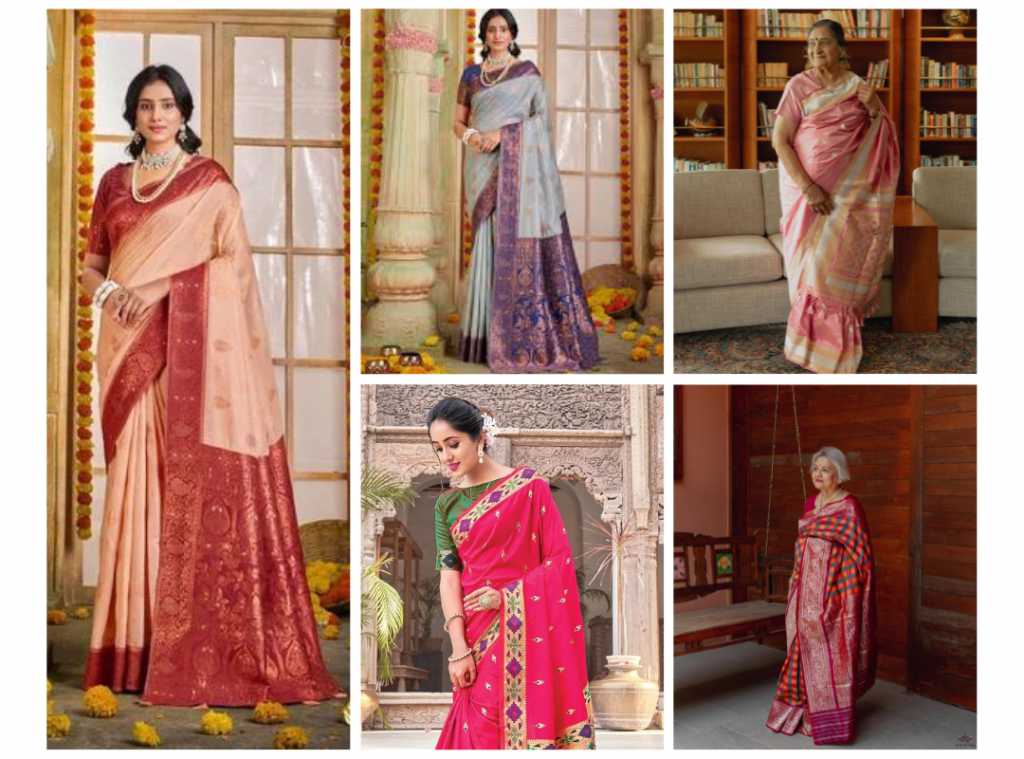
The Ashawali saree is a traditional handloom saree from Gujarat, known for its intricate designs and unique weaving technique. The Ashawali saree has its roots in the town of Ashaval, located in the Surat district of Gujarat. The saree has been woven by local weavers for centuries, and the art form has been passed down through generations. The Ashawali saree is characterized by its intricate designs, featuring geometric patterns, floral motifs, and stylized animal figures. The sarees often incorporate vibrant colors like red, green, and yellow, and are adorned with zari work (metallic thread embroidery).
Gujarat Kuchchi Saree/Bhujodi Saree
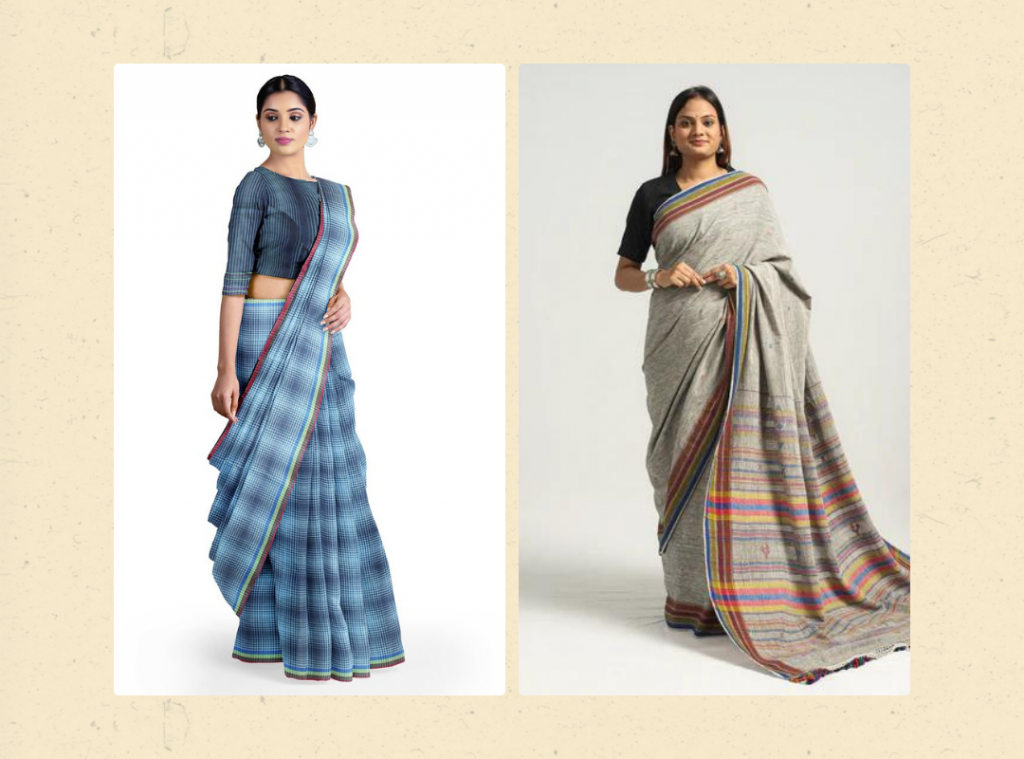
The Kuchchi saree, also known as the Bhujodi saree, is a traditional handloom saree from the Kutch region of Gujarat. The Kuchchi saree has a long history, with its origins dating back to the 16th century. It was traditionally woven by the Kuchchi community of Kutch, who were skilled in intricate embroidery and mirror work. The Kuchchi saree is renowned for its intricate embroidery, featuring mirror work, thread work, and vibrant colors. The designs often depict scenes from daily life, folklore, and nature, including motifs of birds, animals, and floral patterns.
Bandhni
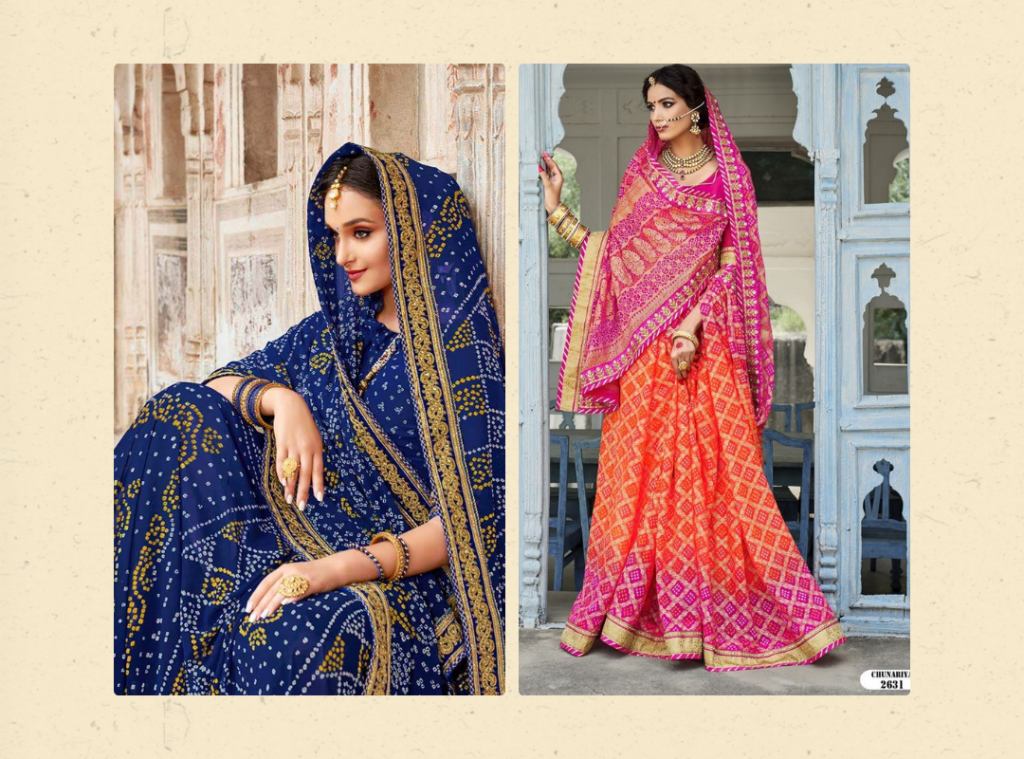
Bandhni, or Bandhani, is a traditional tie-dye technique used in Gujarat to create intricate patterns on sarees and other textiles. The art of Bandhni can be traced back to the 6th century and has been practiced in various regions of Gujarat for centuries. It is believed to have originated in the town of Jamnagar and later spread to other parts of the state. Bandhni sarees are characterized by their intricate patterns created by tying and dyeing the fabric in specific areas. The designs can range from geometric patterns like dots, squares, and circles, to more complex floral and paisley motifs. The sarees often feature vibrant colors like red, yellow, and blue.
Panetar
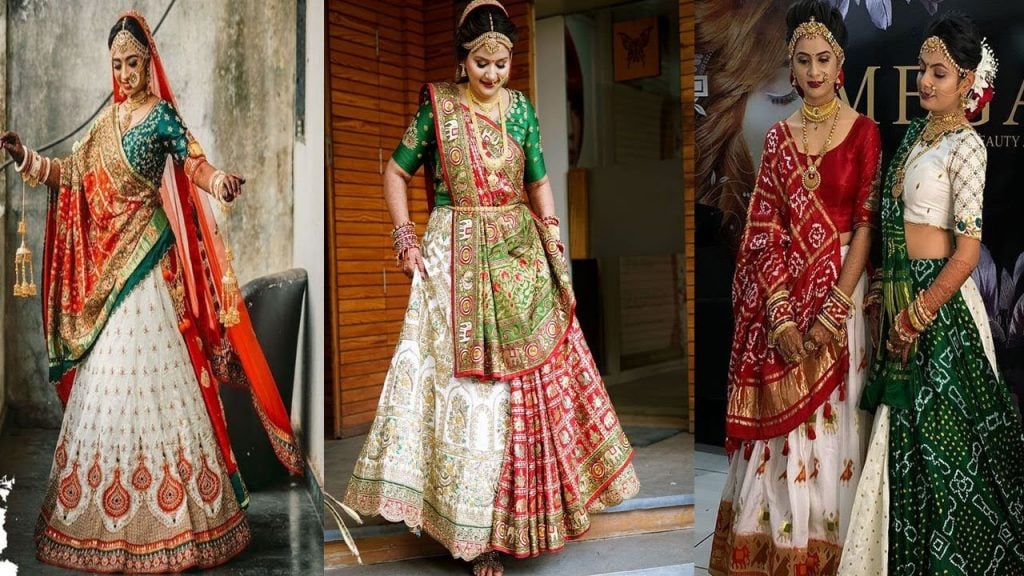
Panetar is a traditional weaving technique used in Gujarat to create sarees with intricate patterns and designs. The Panetar weaving tradition can be traced back to the 16th century and is believed to have originated in the town of Panetar, located in the Patan district of Gujarat. Panetar sarees are known for their intricate patterns, featuring geometric designs, floral motifs, and stylized animal figures. The sarees often incorporate vibrant colors and are adorned with zari work (metallic thread embroidery).
Gharchola
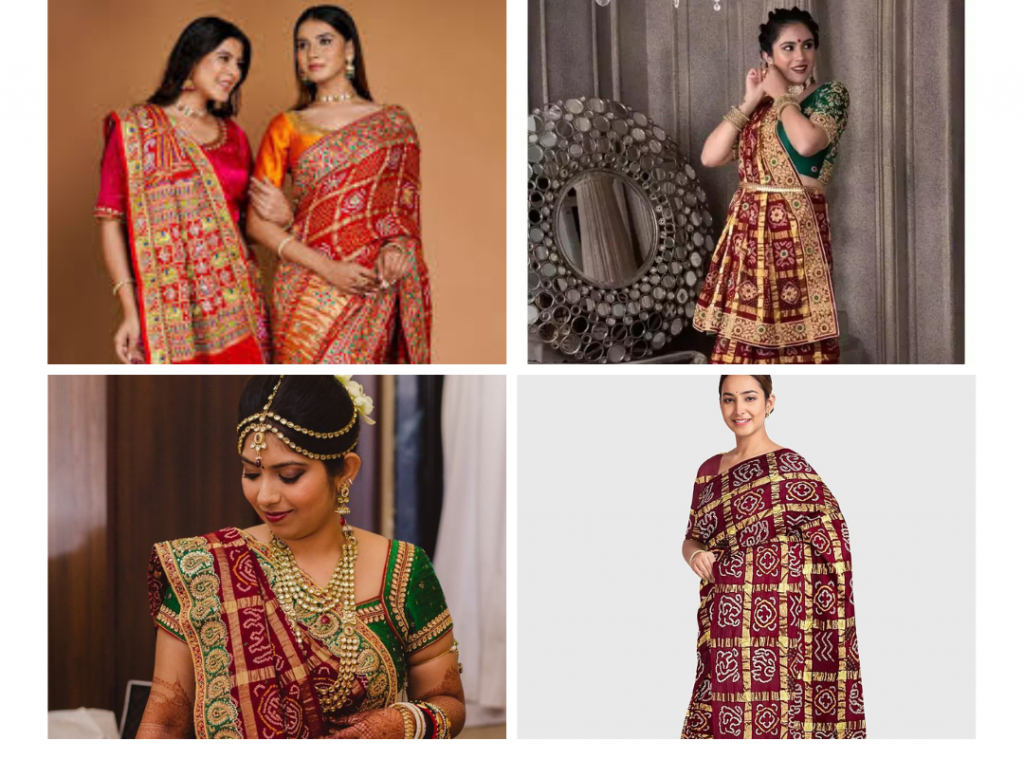
The Gharchola saree is a traditional handloom saree from Gujarat, known for its distinctive checked or striped patterns. The Gharchola saree has a long history, with its origins dating back to the 17th century. The name “Gharchola” is derived from the Gujarati words “Ghar” (house) and “Chola” (cloth), reflecting its association with domestic weaving. The Gharchola saree is characterized by its distinctive checked or striped patterns created by alternating sections of woven and unwoven threads. The patterns can range from simple checks to more intricate designs, often incorporating vibrant colors like red, green, and yellow.
Gujarati Brocade Saree
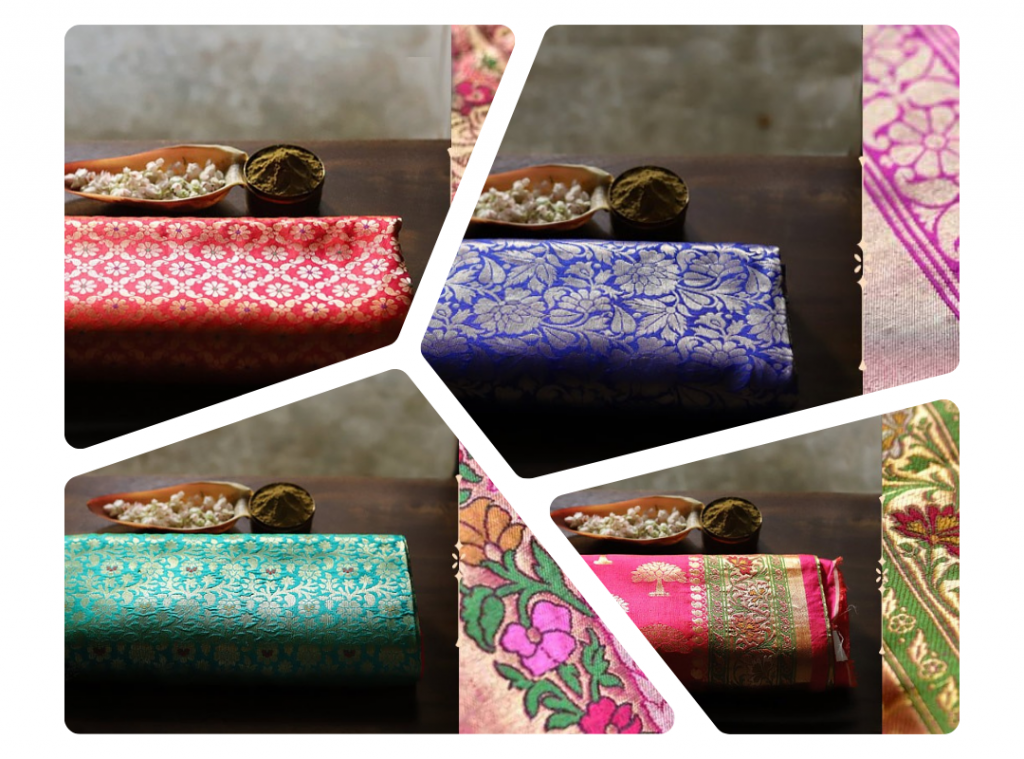
Gujarati brocade sarees are intricate and richly patterned sarees woven with silk and zari (metallic thread) on a jacquard loom. The tradition of weaving brocade sarees in Gujarat can be traced back to the 16th century, when it was patronized by the royal courts and wealthy merchants. Gujarati brocade sarees feature intricate floral patterns, geometric designs, and motifs inspired by nature and mythology. The sarees are known for their vibrant colors, such as red, green, and gold, and the intricate zari work that adds a luxurious sheen.
Gujarati Mirror Work Saree
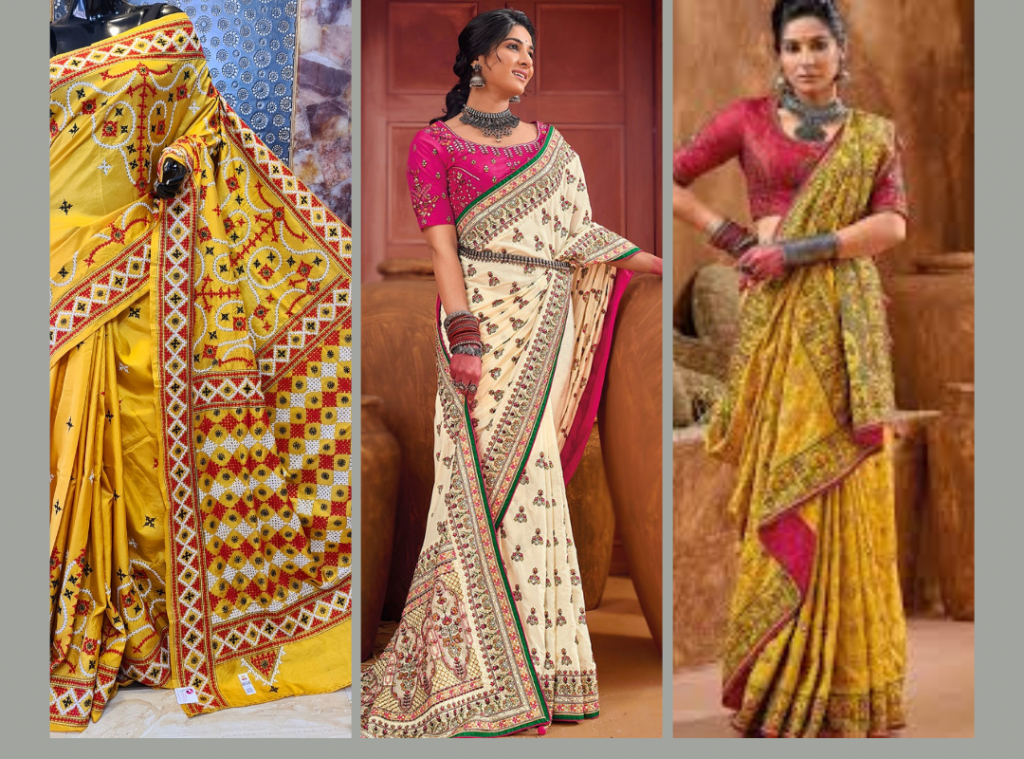
Gujarati mirror work sarees are traditional sarees adorned with intricate embroidery and small mirrored discs, known as “abhla” or “abhrak.” The art of mirror work embroidery has been practiced in Gujarat for centuries and can be traced back to the nomadic communities of the region. Gujarati mirror work sarees feature intricate embroidery patterns, often depicting floral motifs, geometric designs, and stylized animal figures. The small mirrored discs are strategically placed on the saree, creating a dazzling effect when the fabric moves.




